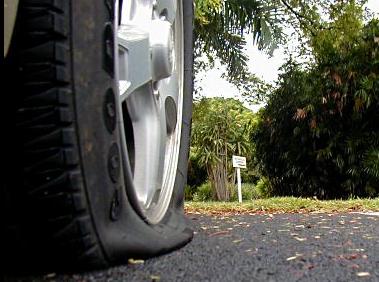 I ran a workshop this week for about 80 professionals who were all expecting a “sit-n-git” presentation in which they could look up at the screen every once in a while, maybe make a note or two on the handout, and then go back to whatever task or game they brought in with them. So I started the session with a loud and rousing rendition of Get Ready 4 This. I asked everyone to stand up and move around. They started clapping and smiling. I grabbed one participant from the front row and started dancing with her. Three minutes later I had a completely different group of people in front of me. And then we got down to work – and I mean work. No one had time to play Angry Birds.
I ran a workshop this week for about 80 professionals who were all expecting a “sit-n-git” presentation in which they could look up at the screen every once in a while, maybe make a note or two on the handout, and then go back to whatever task or game they brought in with them. So I started the session with a loud and rousing rendition of Get Ready 4 This. I asked everyone to stand up and move around. They started clapping and smiling. I grabbed one participant from the front row and started dancing with her. Three minutes later I had a completely different group of people in front of me. And then we got down to work – and I mean work. No one had time to play Angry Birds.
Afterward, people kept coming up to me to comment on how different my presentation was from what they are accustomed to. Apparently, this organization has a track record of presenters who distribute a handout of the slide deck, then talk from the PowerPoint slides, and rarely, if ever, take their eyes off the screen. What a buzzkill! “Dude…you’re ruining my high! I came in here to learn how to “Captivate the Hiring Manager” so I can get the promotion I deserve and you are just blathering on and on in a monotone voice about unique value propositions.”
Even a great topic can be ruined in short order if the presenter is in “tell” mode. Yes, speakers have a lot to say. And if they spent time preparing and thinking about their key message points, they may even have more content than the time allotted. Preparation is essential (as we have said at least a dozen times on this blog), but the sin of failing to engage the audience should be raised from venial to mortal sin – it betrays the covenant of the speaker-audience social contract.
If you are guilty of this sin, here is your penance: find a way to bring a little zeal to your next speech or presentation. What do I mean by zeal? First, show that you actually care and are happy to be there. The only way to do this is to be completely set up before the first audience member arrives. Otherwise you have your head down, connecting power cords and searching for USB ports as your audience is sitting down. Second, convey your enthusiasm for the topic. You don’t have to dance or jump around. You can even be an introvert and still show your “enthusiastic diligence.” This means resisting the urge to talk to the screen. You need to face your audience and glance at the slides as they advance. If you really want to rid yourself of the back-to-the-audience syndrome, invest in a confidence monitor. Just as musicians need amplifiers, speakers need a display monitor right in front of them. Finally, don’t just cover the material. Instead, pose a question to get a discussion going. Share your favorite inspirational quote or humorous bumper sticker about the topic. Enjoy the ride. Your audience will, too.
– Barbara


